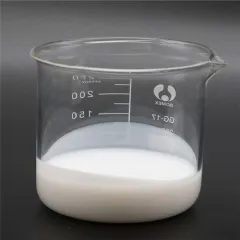Introduction to Surfactants
Surfactants, or surface-active agents, are substances that lower the surface area stress between 2 liquids, a gas and a liquid, or a liquid and a solid. They play a necessary role in numerous markets, from cleansing items to pharmaceuticals. Recognizing surfactants’ residential or commercial properties and applications can open brand-new possibilities for development and efficiency.
(Surfactants)
Types of Surfactants and Their Differences
Anionic Surfactants
Anionic surfactants carry a negative fee on their hydrophilic end. This type is recognized for its superb detergency and lathering residential properties. Typical examples consist of salt lauryl sulfate (SLS) and salt laureth sulfate (SLES), widely utilized in hair shampoos and cleaning agents. Their efficiency at getting rid of oils and dust makes them popular in cleansing products. Nonetheless, they can be bothersome to the skin and eyes.
Cationic Surfactants
Cationic surfactants have a positive cost on their hydrophilic end. They are less typical in cleansing products because of their limited capacity to get rid of dirt. Rather, cationic surfactants are valued for their antimicrobial buildings and are frequently discovered in fabric conditioners and conditioners. Examples include benzalkonium chloride and cetrimonium bromide.
Nonionic Surfactants
Nonionic surfactants do not have an electric fee. They are functional and secure in both acidic and alkaline atmospheres. These surfactants are generally used in family and industrial cleansers because of their great solubilizing and emulsifying buildings. Instances consist of alcohol ethoxylates and alkylphenol ethoxylates. They are additionally utilized in the food market as emulsifiers.
Amphoteric Surfactants
Amphoteric surfactants have both positive and unfavorable charges, making them sensitive to pH changes. At reduced pH levels, they imitate cationic surfactants, while at high pH levels, they act like anionic surfactants. This versatility makes them gentle and efficient in individual treatment items such as child hair shampoos and facial cleansers. Examples include cocamidopropyl betaine and lauriminodipropionate.
Applications Throughout Various Sectors
Surfactants discover applications in countless sectors as a result of their one-of-a-kind residential properties. In the cleaning sector, they improve the removal of dirt and oils, making them vital in detergents and soaps. Personal care products take advantage of surfactants’ cleaning and conditioning homes, providing customers with reliable skincare solutions. The fabric sector utilizes surfactants for coloring and completing materials, making sure dynamic colors and soft structures. Furthermore, surfactants are essential in the oil and gas field, where they enhance the healing of petroleum by lowering interfacial tension between oil and water. Each market benefits from the flexibility and performance-enhancing abilities of surfactants.
( Surfactants)
Market Patterns and Development Drivers
The need for surfactants is raising as new applications are discovered. Advances in producing procedures improve high quality and lower expenses. Checking guarantees materials do as expected, creating far better items. Business embracing these modern technologies supply higher-quality surfactants. Customer recognition concerning the benefits of even more efficient and environmentally friendly items drives passion in those making use of sophisticated surfactants. Advertising and marketing initiatives concentrate on enlightening consumers concerning the advantages of these ingenious surfactants, such as enhanced effectiveness and minimized ecological influence.
Difficulties and Limitations
One obstacle with surfactants is their prospective ecological impact. Some types, especially non-biodegradable surfactants, can collect in ecological communities, leading to pollution. An additional problem is expense. High-quality, environmentally friendly surfactants can be expensive. However, the benefits typically exceed the costs. Products made with advanced surfactants last longer and carry out far better. Companies should demonstrate the worth of these surfactants to validate the price. Security worries likewise exist, as improper handling or problems can lead to health and wellness dangers. Research remains to ensure secure use. Clear communication concerning safety builds trust.
Future Prospects: Innovations and Opportunities
The future looks promising for surfactants. More study will certainly discover methods to improve their performance and lower environmental effect. Advancements such as bio-based and naturally degradable surfactants aim to raise sustainability while preserving stability and performance. As sectors seek greener and extra effective remedies, surfactants will certainly play a key role. Their capacity to give reputable and flexible performance makes them beneficial. New growths may unlock added applications. The possibility for growth in various sectors is considerable.
End of File
This article gives a comprehensive yet simple exploration of surfactants, highlighting their importance throughout various markets. Each section concentrates on particular elements of surfactants, guaranteeing quality and simplicity of comprehending while keeping depth and professionalism and trust.
Supplier
TRUNNANO is a supplier of Surfactants with over 12 years of experience in nano-building energy conservation and nanotechnology development. It accepts payment via Credit Card, T/T, West Union and Paypal. Trunnano will ship the goods to customers overseas through FedEx, DHL, by air, or by sea. If you want to know more about Chromium Oxide, please feel free to contact us and send an inquiry(sales5@nanotrun.com).
Tags: Surfactants, sodium lauryl sulfate, sodium dodecyl sulfate
All articles and pictures are from the Internet. If there are any copyright issues, please contact us in time to delete.
Inquiry us






